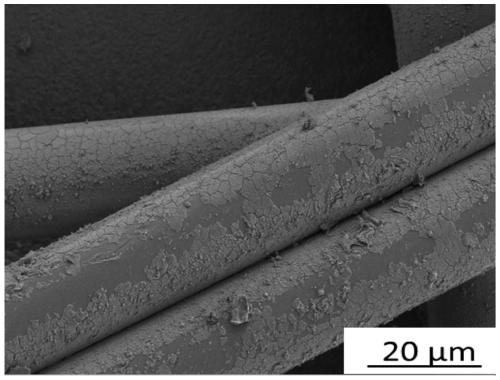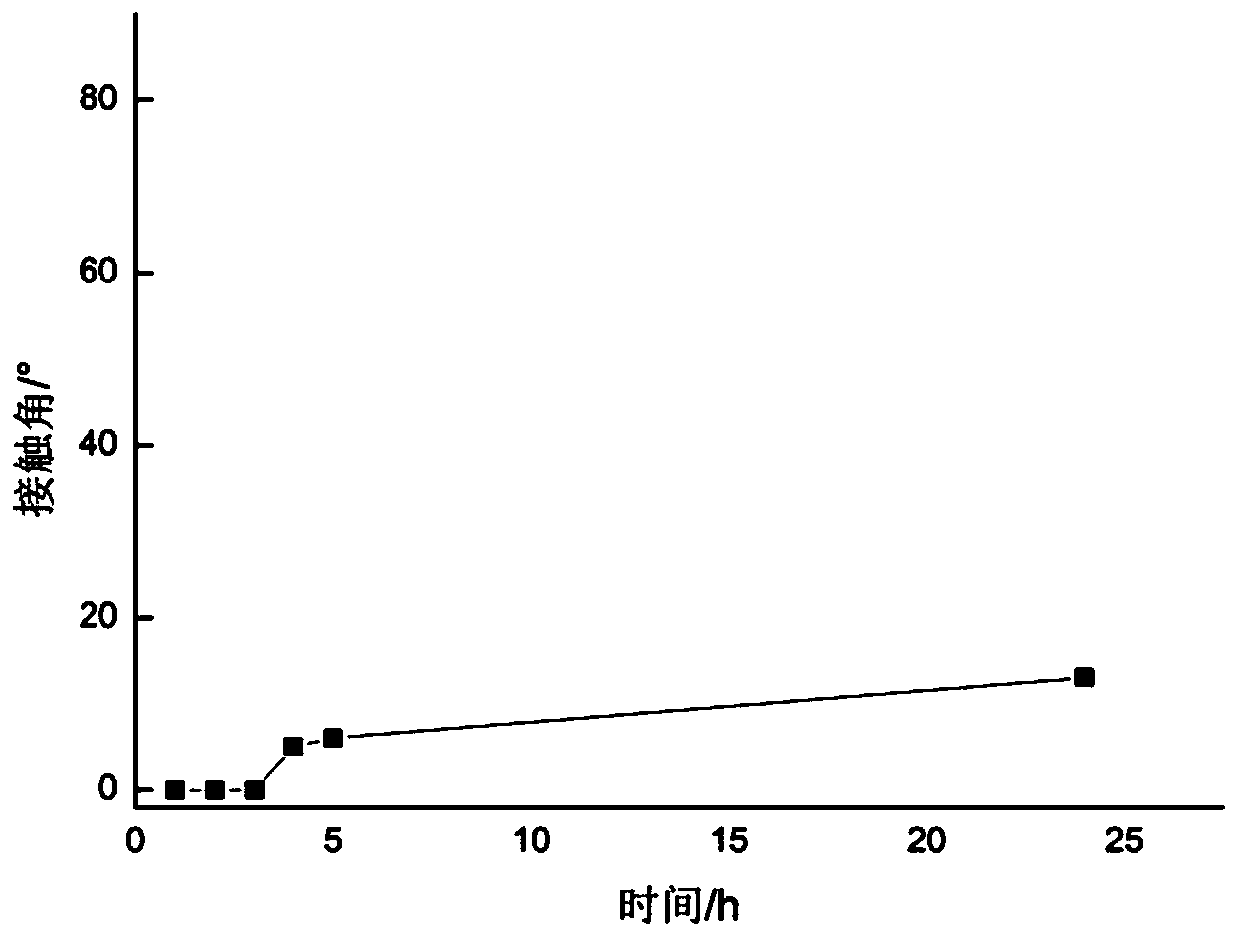Preparation method of durable hydrophilic polypropylene non-woven fabric
A technology of non-woven fabrics and polypropylene, applied in the field of polypropylene non-woven fabrics, can solve the problems of poor hydrophilicity and durability of non-woven fabrics, and achieve the effects of easy promotion and use, low equipment requirements, and simple operation procedures
- Summary
- Abstract
- Description
- Claims
- Application Information
AI Technical Summary
Problems solved by technology
Method used
Image
Examples
Embodiment 1
[0023] (1) Preparation of hydrophilic finishing agent: dopamine hydrochloride, CuSO 4 and H 2 o 2 Dissolve in Tris buffer and stir evenly, then add silica sol with a particle size of 20nm and a solid content of 20%, and adjust the pH of the solution to 8.5 to obtain a hydrophilic finishing agent;
[0024] (2) Wetting pretreatment of nonwovens: Wet polypropylene spunbond nonwovens in absolute ethanol for 1 min and then take them out;
[0025] (3) Hydrophilic finishing of nonwovens: Soak the wetted polypropylene nonwoven fabric in the prepared hydrophilic finishing agent for 3 minutes, take it out, and roll it on a padding machine to control the excess rate of 90%. Then place it in an air-blast oven at 80°C and bake for 20 minutes. After drying, a hydrophilic polypropylene nonwoven fabric is obtained.
[0026] After testing, the water contact angle of the prepared hydrophilic polypropylene nonwoven fabric is 0° (keep for 5s after dripping water and then test); take two 5 × 5c...
Embodiment 2
[0028] (1) Preparation of hydrophilic finishing agent: dopamine hydrochloride, CuSO 4 and H 2 o 2 Dissolve in Tris buffer and stir evenly, then add silica sol with a particle size of 40nm and a solid content of 30%, and adjust the pH of the solution to 8.5 to obtain a hydrophilic finishing agent;
[0029] (2) Wetting pretreatment of nonwovens: Wet polypropylene spunbonded nonwovens in isopropanol for 1 minute and then take them out;
[0030] (3) Hydrophilic finishing of nonwoven fabrics: Soak the wetted polypropylene nonwoven fabric in the prepared hydrophilic finishing agent for 3 minutes, take it out, and roll it on a padding machine to control the excess rate of 95%. Then place it in an air-blast oven at 80°C and bake for 20 minutes. After drying, a hydrophilic polypropylene nonwoven fabric is obtained.
[0031] After testing, the water contact angle of the prepared hydrophilic polypropylene nonwoven fabric is 0° (keep for 5s after dripping water and then test); take two...
Embodiment 3
[0033] (1) Preparation of hydrophilic finishing agent: dopamine hydrochloride, CuSO 4 and H 2 o 2 Dissolve in Tris buffer and stir evenly, then add silica sol with a particle size of 30nm and a solid content of 20%, and adjust the pH of the solution to 8.5 to obtain a hydrophilic finishing agent;
[0034] (2) Wetting pretreatment of nonwovens: Wet polypropylene spunbond nonwovens in 95% industrial ethanol for 1 min and then take them out;
[0035] (3) Hydrophilic finishing of nonwovens: Soak the wetted polypropylene nonwoven fabric in the prepared hydrophilic finishing agent for 3 minutes, take it out and roll it on a padding machine, and control the excess rate to 100%. Then place it in an air-blast oven at 80°C and bake for 20 minutes. After drying, a hydrophilic polypropylene nonwoven fabric is obtained.
[0036] After testing, the water contact angle of the prepared hydrophilic polypropylene nonwoven fabric is 0° (keep for 5s after dripping water and then test); take tw...
PUM
| Property | Measurement | Unit |
|---|---|---|
| particle diameter | aaaaa | aaaaa |
Abstract
Description
Claims
Application Information
 Login to View More
Login to View More - R&D
- Intellectual Property
- Life Sciences
- Materials
- Tech Scout
- Unparalleled Data Quality
- Higher Quality Content
- 60% Fewer Hallucinations
Browse by: Latest US Patents, China's latest patents, Technical Efficacy Thesaurus, Application Domain, Technology Topic, Popular Technical Reports.
© 2025 PatSnap. All rights reserved.Legal|Privacy policy|Modern Slavery Act Transparency Statement|Sitemap|About US| Contact US: help@patsnap.com


